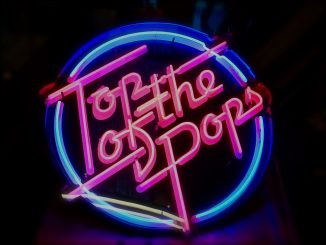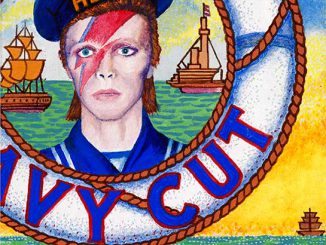From Rolling Stone
Since college, grime artist Novelist wanted to make music at Abbey Road, the fabled London recording studio where everyone from the Beatles to Adele recorded their hits. “I remember once I told a teaching assistant in my music class, ‘Yeah, I’m gonna go to Abbey Road,’ and you can just tell when somebody’s not taking what you’re saying serious,” the 21-year-old says. “It made me laugh a bit.” Within the past year, though, he was in the famed studio, putting the finishing touches on his sonically complex debut LP, Novelist Guy, which came out this past spring. It’s since been shortlisted for the U.K.’s Mercury Prize.
“For me, it was a business transaction,” he says of fulfilling his dream. “It wasn’t just, ‘Oh, yeah, Novelist has found his way into Abbey Road.’ Nah, I bought a session like any other studio. And I was willing to pay that money for that level of quality because, it being my debut album, it’s never gonna fade away.”
Over the past couple of years, the recording institution has made strides in opening its doors to a clientele beyond music’s upper crust. It’s created new, smaller studios, where artists can use the same gear that the Fab Four once did — relics such as a piano John Lennon burned his cigars out on or Paul McCartney’s favored “Lady Madonna” Steinway — just as Bruno Mars or Ed Sheeran could in the larger rooms. Abbey Road has appointed prolific producer and Chic leader Nile Rodgers to the newly created title of chief creative adviser and charged him with concocting fresh ideas for the studio and serving as its ambassador. And it’s added a new store where the half a million or so Apple scruffs who pose for photos on the iconic zebra crossing where the Beatles’ Abbey Road cover photo was taken can buy co-branded band merch directly from the studio, rather than from a bootleg outpost by the nearby tube station (as had been the only option for years). Although its business has never been in decline, the studio today is a rejuvenated version of its former self.
Part of the reason for the change is that staff at the studio realized they had been underserving a large portion of music makers and fans. For decades, Abbey Road has been the London destination for music’s elite. In 1931, EMI opened its doors as a studio in the building, a Georgian construction from 1829, and it became a prime destination for symphonies. Its engineers wore white lab coats and innovated new technologies; one of EMI’s engineers pioneered stereo sound, and the U.K.’s first digital single was recorded there. Cliff Richard, the celebrated singer for the U.K.’s beloved Shadows, brought rock & roll to the studio in the Fifties, the Beatles made it their home in the Sixties and Pink Floyd did the same in the Seventies. Film composer John Williams recorded the Raiders of the Lost Ark score there in 1981, and that established a whole new film business, which led to the recent addition of a Dolby Atmos mixing suite, a studio used both by soundtrack producers and engineers working on surround-sound versions of Sgt. Pepper and INXS’ Kick.
In 2010 — the same year there was a shakeup in ownership and Universal Music took over the studio — it was given English-heritage status, protecting it from gross modifications, and much of it is the same as it always has been. The floors in Studio One are the same ones that the Beatles filmed their “All You Need Is Love” clip on and Pink Floyd used as a garage to tinker on their cars, and Studio Two still has the same tattered baffles as it did in the Forties. The hallways are still lined with bespoke vintage gear, giving it all a sci-fi look. And there’s still a quaint dining room in the basement where artists huddle between takes. The only thing changing is the clientele.

The Beatles at Abbey Road in 1967.
On a recent private tour of the studio, which is not open to the public, its head of brand and marketing, Mark Robertson, explained how the Abbey Road staff realized the potential of the brand. They began by comparing the studio’s customer base to a pyramid: the tip is the professionals — A-list artists, film composers, symphonies — then there are home-studio musicians like Novelist who could use a place like Abbey Road to finish up their recordings and finally there are fans of the artists who’ve recorded there. When they looked at the big picture, they realized they might have a perception problem.
“There was this view of Abbey Road that was a bit out of reach, a bit unattainable, a little bit aloof,” Robertson tells Rolling Stone in the Front Room, a new studio about the size of a Manhattan apartment that Rodgers has made his London home away from home. “I thought as a brand, we’ve got the authority and the history. There’s always been this innovation; stereo was invented here. And we have such incredible talent here. For me, it was about being a lot more open and humanizing Abbey Road.”
To aid them, they enlisted Rodgers as an ambassador to artists and producers this past March. The Chic guitarist had been involved in the studio’s spatial audio forum and set up shop in the Front Room and the Gatehouse, another new studio in an adjoining building a short walk from Studio Two. He subsequently brought Mura Masa and Nao to the latter studio and recorded “Till the World Falls,” a disco-leaning new single that will appear on the upcoming Chic LP. He also worked with Bruno Mars and Anderson .Paak at Abbey Road, exploring new ways to challenge himself.
Read the full article over at Rolling Stone.
Check out our catalogue of rare and collectable vinyl on eil.com, and if you have any items to sell, please call us on 01474 815099
eil.com – the world’s best online store for rare, collectable and out of print Vinyl Records, CDs & Music memorabilia since 1987




Be the first to comment